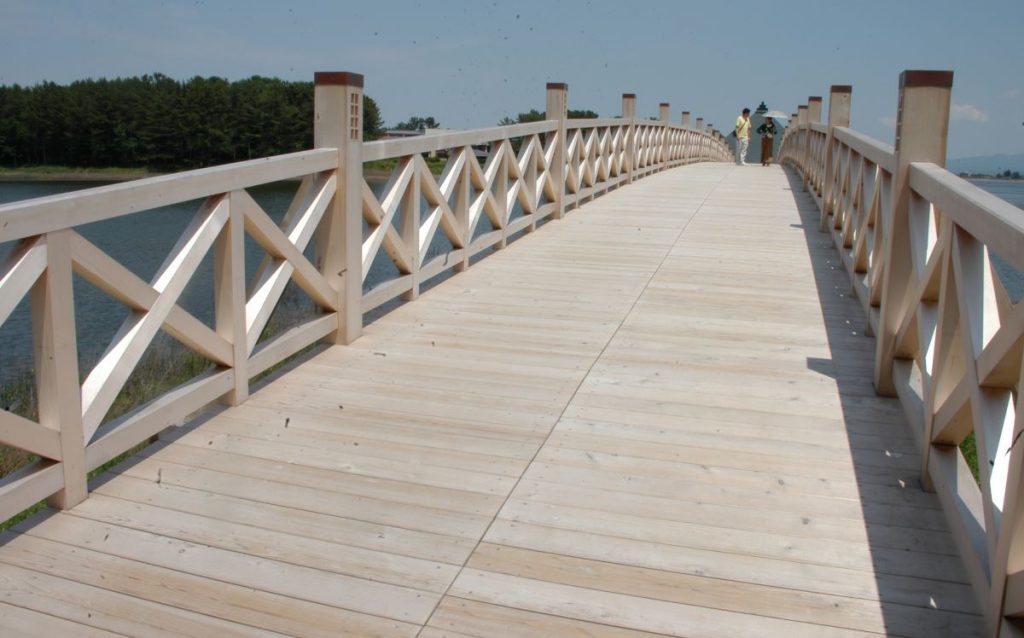
The picturesque Tsuru-no-mai Bridge, a tourist attraction in Tsuruta Town of Aomori Prefecture, is designed to resemble cranes in flight. (©Sankei by Noriyuki Fukuda)
Read the full story on Japan 2 Earth - Tsuru-no-Mai Bridge: Upcycling Wood Waste from a Tourist Treasure
A town called Tsuruta in Aomori Prefecture has launched a very unique upcycling initiative. They are reusing scrap materials from the renovation of Tsuru-no-mai Bridge, a popular tourist spot. Wood waste is being transformed into products like chopsticks and sake cups.
The town aims to add new value to this precious tourism resource and attract more visitors by promoting these products. Sales revenue could also be funneled into future bridge maintenance costs. The second batch of wooden products will be unveiled this summer. Will this endeavor breathe new life into efforts to create a circular economy?
A Town for Cranes
The small town of Tsuruta, whose name means "crane rice fields," has historically been associated with cranes dating back to the Edo period. To this day, local authorities incorporate cranes into town planning.
The landmark Tsuru-no-Mai Bridge was completed in July 1994 at a total cost of 260 million yen, funded by national and prefectural subsidies. It is now managed by the town government. The arched wooden bridge is 300 meters long and 3 meters wide. It was constructed from 700 cypress (asunaro) trees of over 150 years in age.

The gentle arches of the bridge, designed to evoke the image of a pair of cranes in flight, have become a symbol of the town.
Continue reading the full story on Japan 2 Earth to read more about the products made from waste wood.
And find more great articles on the environment and the challenges of achieving the SDGs on our affiliated website Japan 2 Earth (J2E), sparking a transition to a sustainable future.
RELATED:
- The Future of Forestry is Circular: Transforming Wood Waste into Essential Oils
- Hidden Wonders | A Curious Footbridge in Yokohama
- Japan Builds the World's First Wooden Satellite as Eco-Friendly Alternative
(Read the article in Japanese.)
Author: Noriyuki Fukuda








